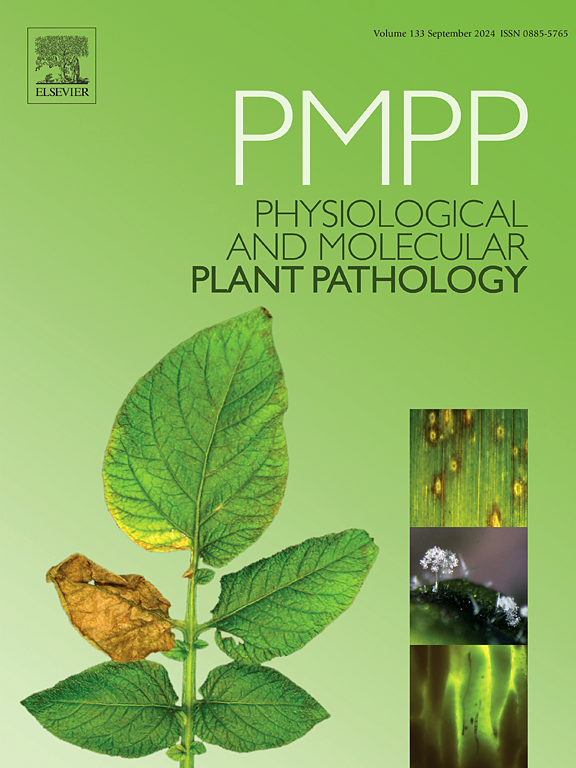Identification of major fungal diseases in sorghum and screening of broad-spectrum resistance germplasms in Southwest China
IF 2.8
3区 农林科学
Q2 PLANT SCIENCES
引用次数: 0
Abstract
Sorghum is a key raw material for traditional Chinese Baijiu brewing. However, its productivity and grain quality are constantly threatened by fungal diseases in the high-temperature, high-humidity environments of Southwest China. Over a two-year field investigation, we identified 13 distinct diseases and isolated nine pathogenic fungi for further laboratory characterization. Among these fungal diseases, leaf spot and anthracnose, caused by Alternaria alternata and Colletotrichum sublineola, respectively, were the most prevalent and destructive. Additionally, Fusarium stalk rot and leaf blight, caused by Fusarium thapsinum and Exserohilum turcicum, respectively, were observed in some sorghum-producing regions and displayed an outbreak tendency. Through multi-environment resistance evaluations on 50 core sorghum germplasms, we selected six accessions (B068, B193, B284, B289, B300 and B316) that consistently exhibited broad-spectrum resistance against all major pathogens. In contrast, we found that most glutinous varieties were susceptible to the four major pathogens, including the widely cultivated Hongyingzi, Guojiaohong 1, Langnuo 19, and Yinuohong 4. These findings provide crucial genetic resources for development disease-resistant glutinous sorghum varieties in Southern China.
求助全文
约1分钟内获得全文
求助全文
来源期刊
CiteScore
4.30
自引率
7.40%
发文量
130
审稿时长
38 days
期刊介绍:
Physiological and Molecular Plant Pathology provides an International forum for original research papers, reviews, and commentaries on all aspects of the molecular biology, biochemistry, physiology, histology and cytology, genetics and evolution of plant-microbe interactions.
Papers on all kinds of infective pathogen, including viruses, prokaryotes, fungi, and nematodes, as well as mutualistic organisms such as Rhizobium and mycorrhyzal fungi, are acceptable as long as they have a bearing on the interaction between pathogen and plant.

 求助内容:
求助内容: 应助结果提醒方式:
应助结果提醒方式:


